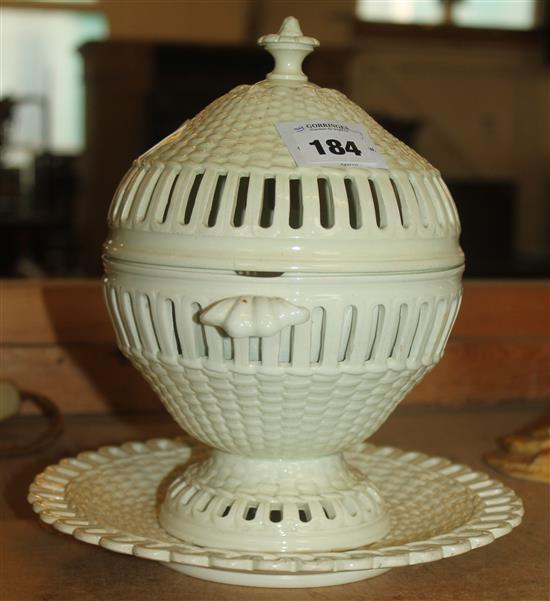

The many local companies in the area contributed to the establishment of Staffordshire as a major innovator, with developments including bone china, jasperware and transfer printing. One of the most notable centres of production in England was Staffordshire, whose success was in part due to the local availability of resources including clay, lead and coal. Increasingly sophisticated formulae and techniques developed alongside new designs in the 'Chinoiserie' style, which drew on Asian sources in charming reinterpretations. Similarly, stoneware production was also the result of European influence and German-style tankards were produced in Fulham from 1672.Īs pottery and kiln technology improved over the course of the eighteenth century, English manufacturers joined the quest to emulate the Asian porcelain imported into Europe by the East India Companies. Antique 18thc/19thc Wedgwood Creamware/ Queensware Round Tureen, Cover and Associated Stand/Plate c1800. MAKER: Appears to be Wedgwood late 18th / early 19th century - marked only '240'. Vandekar of Knightsbridge Antiques is owned and run by Paul Vandekar and his wife Deidre Healy.We specialize in the decorative arts of the 17th-20th century.

However, following mass-immigration from the Netherlands and Germany as a result of religious persecution in the 17th century, European artisans had a huge impact on the history of ceramic production in England.ĭelftware, distinct from its Dutch counterpart, began to be produced in the early 17th century and became hugely popular owing to the colourful designs made possible by new glaze technology. This late 18thc Wedgwood tureen & cover is in very good condition with just wear and a very fine small hairline in the base. Pottery has been made in Britain since the Neolithic era, and until the 16th century the main material used was red clay.


 0 kommentar(er)
0 kommentar(er)
